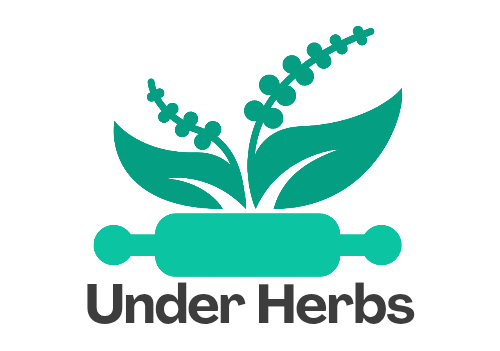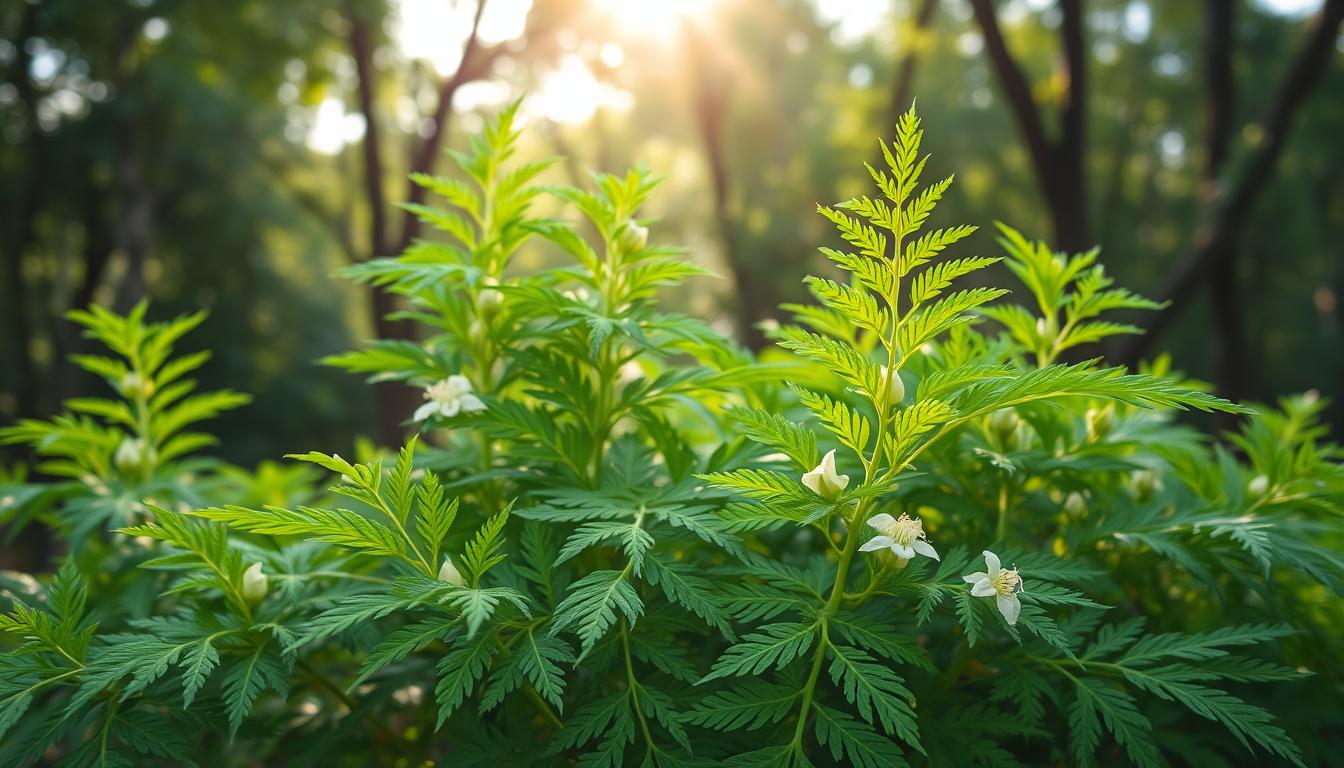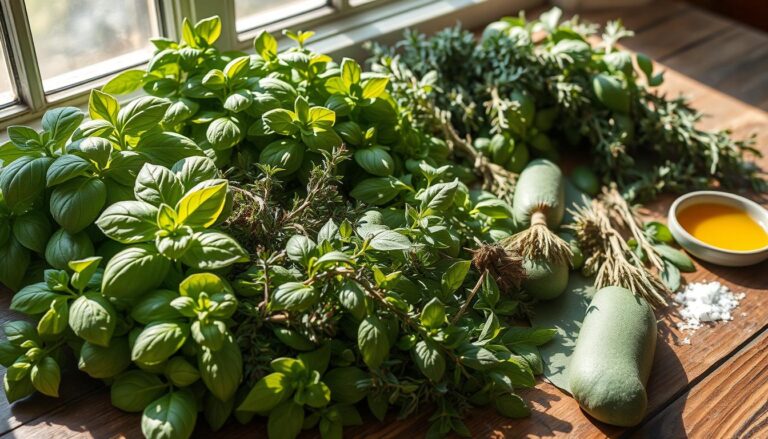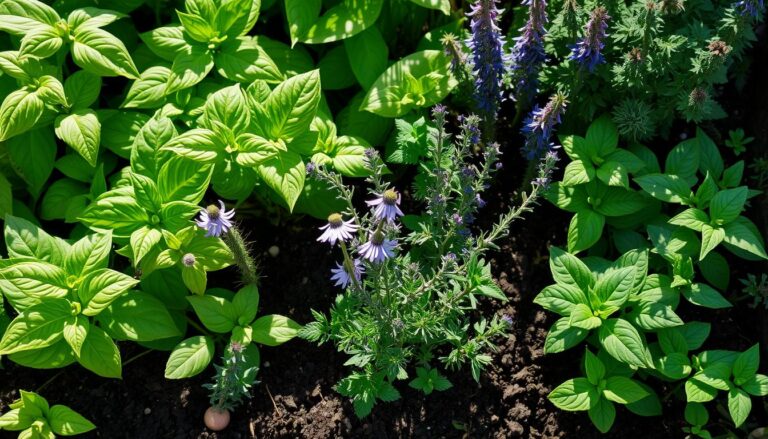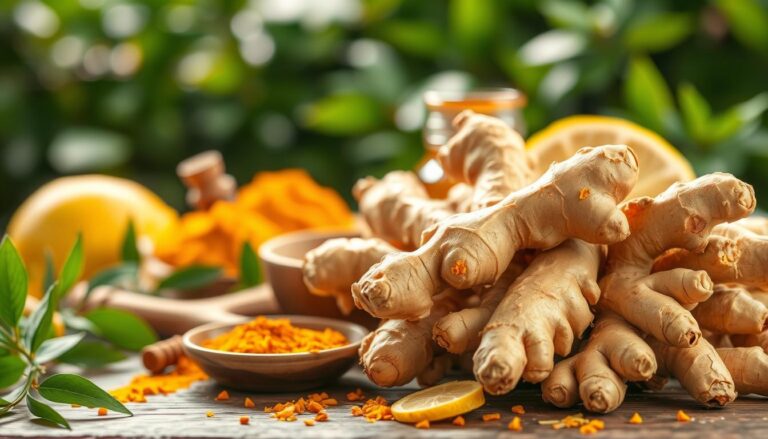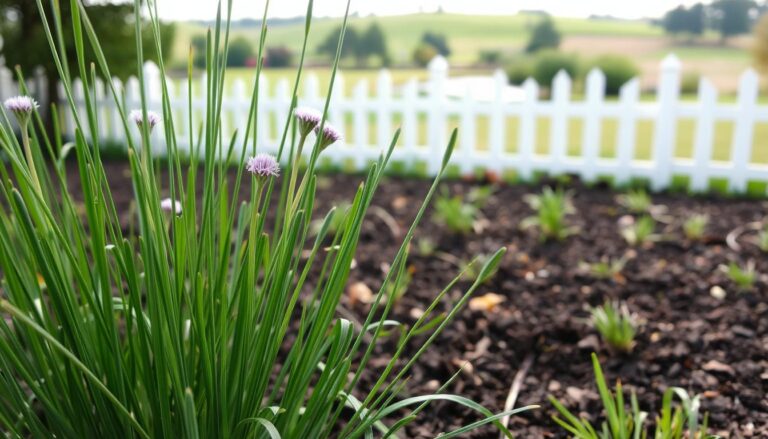Moringa oleifera: The Superfood You Need to Know About
Have you heard of Moringa oleifera? It’s a plant known for its health benefits for thousands of years. Found in South Asia, it’s packed with vitamins A, C, potassium, calcium, iron, and protein. One cup of its leaves gives you 2 grams of protein and lots of other nutrients1.
It’s called a superfood because it’s so nutritious. It’s great for your health when eaten as part of a balanced diet. In places where food is scarce, Moringa oleifera is a lifesaver because it’s full of vitamins and minerals1.
Key Takeaways
- Moringa oleifera is a rich source of vitamins A, C, potassium, calcium, iron, and protein, making it an excellent source of nutrition1.
- Moringa oleifera has been used consistently in Ayurvedic medicine for thousands of years and is considered a superfood that can provide numerous health benefits when consumed as part of a balanced diet.
- Moringa leaves have high levels of antioxidants, such as quercetin and chlorogenic acid, which contribute to its health benefits1.
- Moringa oleifera can potentially lower cholesterol levels, reducing the risk of heart disease, according to animal and human-based studies1.
- Moringa is seen as a nutrient-dense food that can supplement diets lacking in proper nutrition, potentially addressing nutritional deficiencies in populations with readily available calories but limited access to nutritious foods2.
What Is Moringa oleifera and Its Historical Significance
Moringa oleifera is a plant with a long history in traditional medicine. Its leaves, seeds, and pods are edible and packed with nutrients3. It’s known as a superfood for its health benefits, like antioxidants that protect cells4.
The plant’s roots in traditional medicine are deep. It’s valued for its nutritional and medicinal properties across cultures. People use it as food and medicine5. It thrives in warm climates, making it a common crop in many places.
Ancient Origins and Traditional Uses
Moringa oleifera comes from northern India and grows in warm areas like Asia and Africa4. For centuries, it’s been used in folk medicine. Its leaves, flowers, seeds, and roots help treat many health issues.
Cultural Significance Across Civilizations
Moringa oleifera holds a special place in many cultures. It’s seen as a superfood, used in food and medicine3. Its antioxidants and cell-protecting properties make it a favorite for health-conscious people.
The Remarkable Nutritional Profile of Moringa
Moringa oleifera is known for its amazing nutritional value. It’s full of vitamins, minerals, and antioxidants. The leaves, seeds, and pods of the moringa plant are rich in nutrients. This makes it a great choice for a healthy diet.
Research6 shows that moringa leaves have all 9 essential amino acids. This is rare in plant-based foods, making moringa a complete protein source.
Moringa oleifera has a lot of vitamins A, C, and E, and minerals like calcium, iron, and potassium6. It has 4 times the calcium of milk, which is good for bones and teeth. It also has 4 times more vitamin C than oranges, boosting the immune system and skin health6. The iron in moringa is about 7 times more than in spinach6, making it a great natural iron source.
Some of the key nutrients in moringa oleifera include:
- Vitamins: A, C, and E
- Minerals: calcium, iron, potassium, and zinc
- Antioxidants: quercetin and chlorogenic acid
- Protein: complete protein with all 9 essential amino acids
Moringa oleifera is packed with nutrients, offering many health benefits. Its antioxidants, like quercetin and chlorogenic acid, fight oxidative stress and inflammation6. Its remarkable nutritional profile makes it a fantastic addition to a healthy diet.
Understanding Moringa oleifera’s Powerful Antioxidant Properties

Moringa oleifera is famous for its strong antioxidant properties. These help fight free radicals and reduce oxidative stress7. It has compounds like quercetin and chlorogenic acid. These have anti-inflammatory and cellular protection benefits7.
The antioxidant properties of Moringa oleifera are great for fighting free radicals and protecting cells. Its key compounds help neutralize free radicals and lower oxidative stress. This leads to health benefits like less inflammation and better cellular protection7.
Key Antioxidant Compounds
Moringa oleifera contains important antioxidants like quercetin, chlorogenic acid, and ferulic acid7. These have anti-inflammatory and cellular protection benefits. This makes Moringa oleifera a great resource for health and well-being.
Fighting Free Radicals
Moringa oleifera’s antioxidant properties help fight free radicals and protect cells7. It reduces oxidative stress and inflammation. This can prevent diseases like heart disease, cancer, and diabetes8.
Cellular Protection Benefits
Moringa oleifera offers many cellular protection benefits. These include less inflammation, better heart health, and a stronger immune system7. Adding Moringa oleifera to your diet can protect your cells and keep you healthy.
| Antioxidant Compound | Health Benefit |
|---|---|
| Quercetin | Anti-inflammatory and cellular protection benefits |
| Chlorogenic acid | Antioxidant and anti-inflammatory effects |
| Ferulic acid | Antioxidant and anti-inflammatory effects |
Essential Vitamins and Minerals in Moringa
Moringa oleifera is packed with vitamins A, C, and E, and minerals like calcium, iron, and potassium9. These nutrients are key for staying healthy and fighting off diseases. Moringa’s high nutritional value offers many health perks, such as better vision, a stronger immune system, and stronger bones.
The nutritional profile of moringa oleifera is remarkable. It has 7 times more vitamin C than oranges and 17 times more calcium than milk10. The leaves of the moringa tree also boast a good amount of protein. They contain 6.7g of protein per 100g in fresh leaves, 29.4g in dry leaves, and 27.1g in leaf powder10.
| Vitamin/Mineral | Content in Moringa |
|---|---|
| Vitamin A | 756 mcg per 100g |
| Vitamin C | 220 mg per 100g |
| Calcium | 440 mg per 100g |
| Iron | 4 mg per 100g |
| Potassium | 1320 mg per 100g |
Moringa oleifera is a nutritious supplement that can help solve the global problem of malnutrition. It affects 194 million people who suffer from hunger daily9. Adding moringa to your diet can boost your nutrition and lower disease risks.
Scientific Research Behind Moringa’s Health Benefits
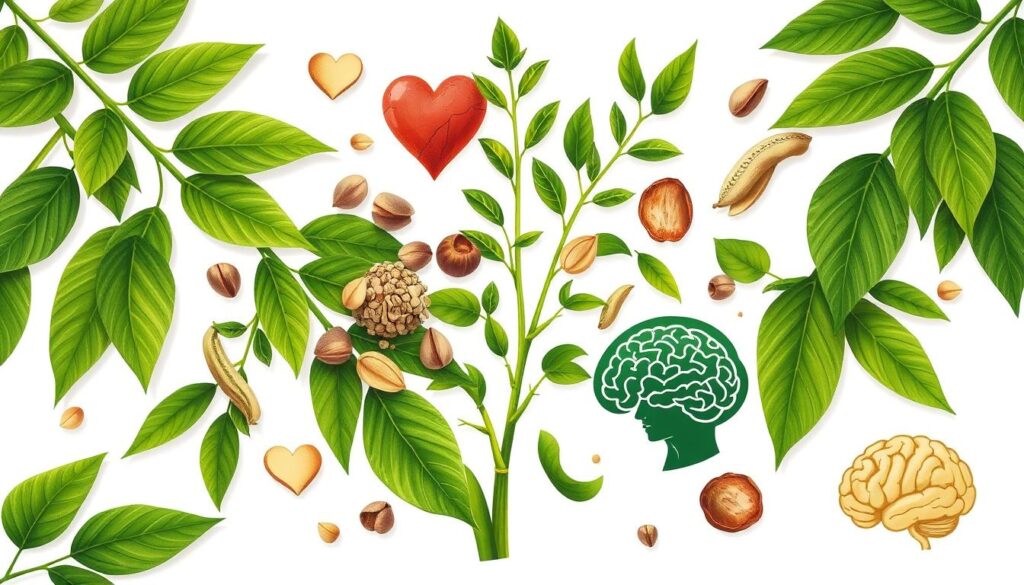
Moringa oleifera has been studied a lot for its health benefits. Over 100 compounds have been found in it, like vitamins and antioxidants. This makes it a natural remedy for many health issues11.
Studies show moringa oleifera can help lower blood sugar and cholesterol. It may also improve how well the body uses insulin and help with weight loss11. For example, a 2015 study found that mice eating moringa extract had better blood sugar control and less weight gain12.
Some key areas of research on moringa oleifera include:
- Studies on its effects on blood sugar and cholesterol
- Investigations into its antioxidant properties
- Research on its impact on glucose tolerance and insulin signaling
The research on moringa oleifera’s health benefits is still growing. Many studies support its use as a natural remedy for different health problems1211.
Different Forms of Moringa Supplements
Moringa oleifera comes in powder, capsules, and extract. It’s easy to add to your daily meals13. These supplements are packed with nutrients and may help with inflammation. You can pick the form that fits your lifestyle, like powder for smoothies or capsules for daily intake.
Some key forms of moringa supplements include:
- Moringa powder: full of antioxidants and boosts nutrition in dishes13
- Moringa capsules: simple and convenient for daily use13
- Moringa extract: useful in cooking or as a natural remedy14
Think about what form works best for you and your health goals. Moringa supplements add important vitamins and antioxidants to your diet13. Always talk to a doctor before starting any new supplements.
Adding moringa supplements to your daily routine can bring many health benefits. With its many forms and uses, moringa oleifera is a great choice for a healthy lifestyle13.
| Form of Moringa Supplement | Benefits |
|---|---|
| Moringa Powder | Rich in antioxidants, can be added to various dishes |
| Moringa Capsules | Convenient and easy to take as a daily supplement |
| Moringa Extract | Can be used in cooking or as a natural remedy for various health issues |
How to Incorporate Moringa Into Your Daily Diet
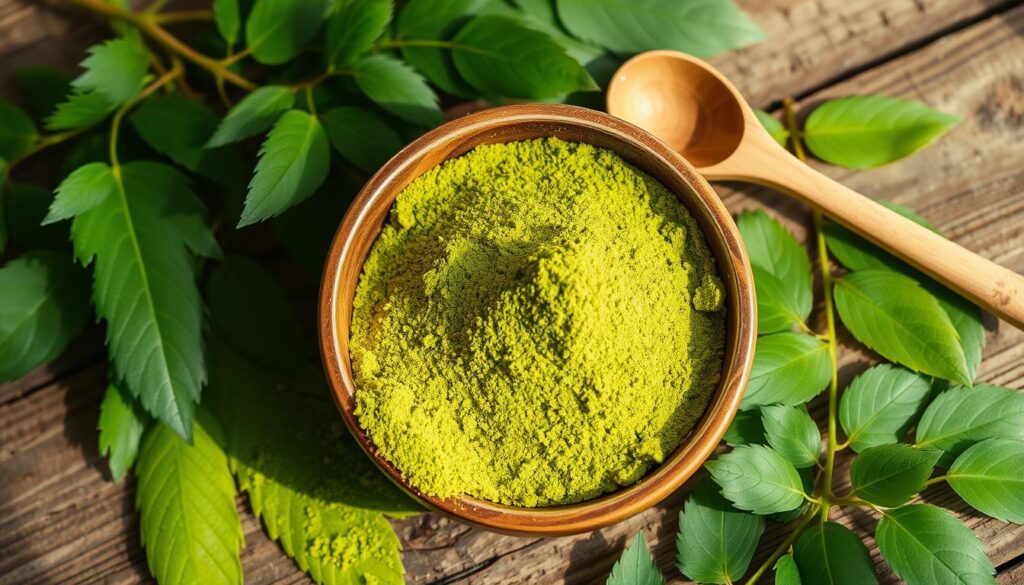
Adding moringa oleifera to your diet is simple and tasty. You can cook with moringa leaves, use its powder as a supplement, or make drinks from it. It’s packed with vitamins A and C, calcium, potassium, and iron15. This makes it a fantastic addition to a healthy diet.
Moringa leaves are very nutrient-dense, with about 20-25% dry matter content16. You can mix them into juice, salads, cooked dishes, or make tea. For instance, add moringa leaves to your smoothies or use them as a garnish for soups and salads.
Cooking with Moringa Leaves
Cooking with moringa leaves is a fantastic way to include them in your meals. You can sauté them with garlic and onions, add them to stir-fries, or use them in soups and stews. Moringa leaves have antioxidants like quercetin, chlorogenic acid, and beta-carotene15. These help protect cells and reduce inflammation.
Moringa Powder Applications
Moringa powder is great as a supplement or in food and drinks. It’s high in protein, making it excellent for vegetarian and vegan diets15. You can mix moringa powder into smoothies, salads, or energy bars.
Beverage Preparations
You can make various drinks with moringa, like tea, juice, and smoothies. Steep moringa leaves in hot water for tea, or blend them with fruits and milk for a smoothie. Moringa drinks offer a nutritional boost, perfect for starting your day16.
Safety Considerations and Recommended Dosage
When you take moringa oleifera, it’s key to think about safety and the right dosage. This ensures you avoid any side effects17. It’s a nutritious addition to your diet, but always stick to the recommended amounts17.
Moringa oleifera is usually safe, but too much can lead to problems17. Some research shows it might harm your liver, kidneys, cause miscarriage, or lead to diarrhea18. But, it’s not known to cause skin issues18.
To stay safe, here’s what to do:
- Begin with a small dosage and slowly increase it17
- Talk to a doctor before using moringa oleifera if you have health issues17
- Make sure to buy a high-quality moringa oleifera product from a trusted source19
By following these tips and knowing the possible side effects, you can safely add moringa oleifera to your meals. This way, you can enjoy its many health benefits17.
| Recommended Dosage | Potential Side Effects |
|---|---|
| Start with a low dosage (500-1000 mg) and gradually increase as needed17 | Alterations in liver and kidney function, miscarriage, diarrhea18 |
Sustainable Harvesting and Environmental Impact
Moringa oleifera is a drought-tolerant crop that can grow in many places. This makes it a good choice for farming communities. It supports sustainable harvesting and lowers the environmental impact of growing it. Knowing the benefits of growing moringa sustainably is key.
Some key benefits of sustainable moringa cultivation include:
- Year-round income for farmers through regular harvesting
- Improved soil health due to moringa’s ability to tolerate a wide variety of soils
- Reduced water usage due to moringa’s drought-tolerant properties20
Moringa trees can grow to full maturity in just 9 months. They can be harvested every 6-8 weeks, giving farmers a steady income20. Moringa is also very nutritious, packed with protein, fiber, and vitamins like A, E, and K20. Its leaves and seeds are full of protein, iron, and vitamins, making it a superfood21.
Supporting sustainable moringa farming helps reduce the environmental impact of farming. It promotes eco-friendly farming. This benefits the environment and ensures a steady supply of quality moringa products.
| Moringa Cultivation Benefits | Environmental Impact |
|---|---|
| Year-round income for farmers | Reduced water usage |
| Improved soil health | Increased biodiversity |
Best Practices for Storing and Preserving Moringa Products
To keep moringa oleifera products healthy, it’s key to store and preserve them right. The first source says you can dry, freeze, or powder them to keep their nutrition intact22.
Here are some important tips for storage and preservation:
- Drying temperatures: The best range for keeping vitamin C is 35 to 60°C22.
- Mineral retention: Calcium and iron stay good at 35 to 60°C22.
- Nutrient concentration: Leaflets have more nutrients than the leafstalk22.
Also, working with small farmers is a good way to keep moringa oleifera products fresh. They can teach you how to dry leaves and make powder23. This keeps the nutrition in and makes the products last longer.
By using these tips, you can keep moringa oleifera products nutritious. They become a great part of your diet.
| Method | Temperature | Nutrient Retention |
|---|---|---|
| Drying | 35-60°C | High |
| Freezing | -18°C | High |
| Powdering | Room temperature | Medium |
Conclusion: Embracing Moringa as Part of Your Wellness Journey
Moringa oleifera is a superfood that can greatly benefit your wellness routine24. It’s packed with nutrients, has strong antioxidant powers, and research supports its health benefits25. This ancient plant could really improve your overall health.
Adding Moringa to your diet can give you a boost of vitamins and minerals26. It supports your immune system, skin, and energy levels. You can enjoy it in smoothies, tea, or cooking, making it easy to add to your routine.
Keep moving towards better health by trying Moringa oleifera25. Small changes can make a big difference over time.
FAQ
What is Moringa oleifera and what are its health benefits?
Moringa oleifera, also known as the “Miracle Tree,” is a plant with many health benefits. It’s packed with vitamins A, C, potassium, calcium, iron, and protein. This makes it a superfood that can boost your health when eaten as part of a balanced diet.
What is the history and cultural significance of Moringa oleifera?
Moringa oleifera has been used for thousands of years. It’s known as a superfood because of its ancient origins and cultural importance. People have used it in traditional medicine to treat many health issues. Today, it’s gaining popularity for its health benefits.
What makes the nutritional profile of Moringa oleifera so remarkable?
Moringa oleifera is rich in vitamins A, C, and E, and minerals like calcium, iron, and potassium. Its leaves, seeds, and pods also have antioxidants like quercetin and chlorogenic acid. These help protect against oxidative stress and inflammation.
How do the antioxidant properties of Moringa oleifera contribute to its health benefits?
Moringa oleifera’s antioxidants fight free radicals and protect cells. Compounds like quercetin and chlorogenic acid neutralize free radicals. This reduces oxidative stress and inflammation, leading to many health benefits.
What are the essential vitamins and minerals found in Moringa oleifera?
Moringa oleifera is a treasure trove of vitamins and minerals. It’s rich in vitamins A, C, and E, and minerals like calcium, iron, and potassium. These nutrients support vision, immune function, and bone health.
What does the scientific research say about the health benefits of Moringa oleifera?
Research on Moringa oleifera’s health benefits is ongoing. Studies show it can lower blood sugar and cholesterol levels. This makes it a natural remedy for various health conditions.
In what forms can Moringa oleifera be consumed?
Moringa oleifera comes in powder, capsules, and extract. These forms make it easy to add to your diet. They offer health benefits like improved nutrition and reduced inflammation.
How can Moringa oleifera be incorporated into a daily diet?
Adding Moringa oleifera to your diet is simple and tasty. You can cook with its leaves, use its powder, or make drinks. It’s a nutritious addition to a balanced diet, offering health benefits and improved nutrition.
What safety considerations and recommended dosages should be kept in mind when consuming Moringa oleifera?
It’s important to consider safety and dosage when using Moringa oleifera. It’s a nutritious superfood with potential health benefits. Following recommended dosages ensures safe consumption.
How is Moringa oleifera cultivated and harvested in a sustainable manner?
Moringa oleifera is a sustainable crop. It can be grown and harvested using eco-friendly methods. This reduces environmental impact and benefits farming communities. Its ability to grow in various environments makes it a great choice for sustainable farming.
What are the best practices for storing and preserving Moringa oleifera products?
To keep Moringa oleifera products nutritious and beneficial, follow proper storage and preservation methods. Options like drying, freezing, or powdering allow for long-term storage. This ensures the products’ nutritional value and health benefits are maintained.
